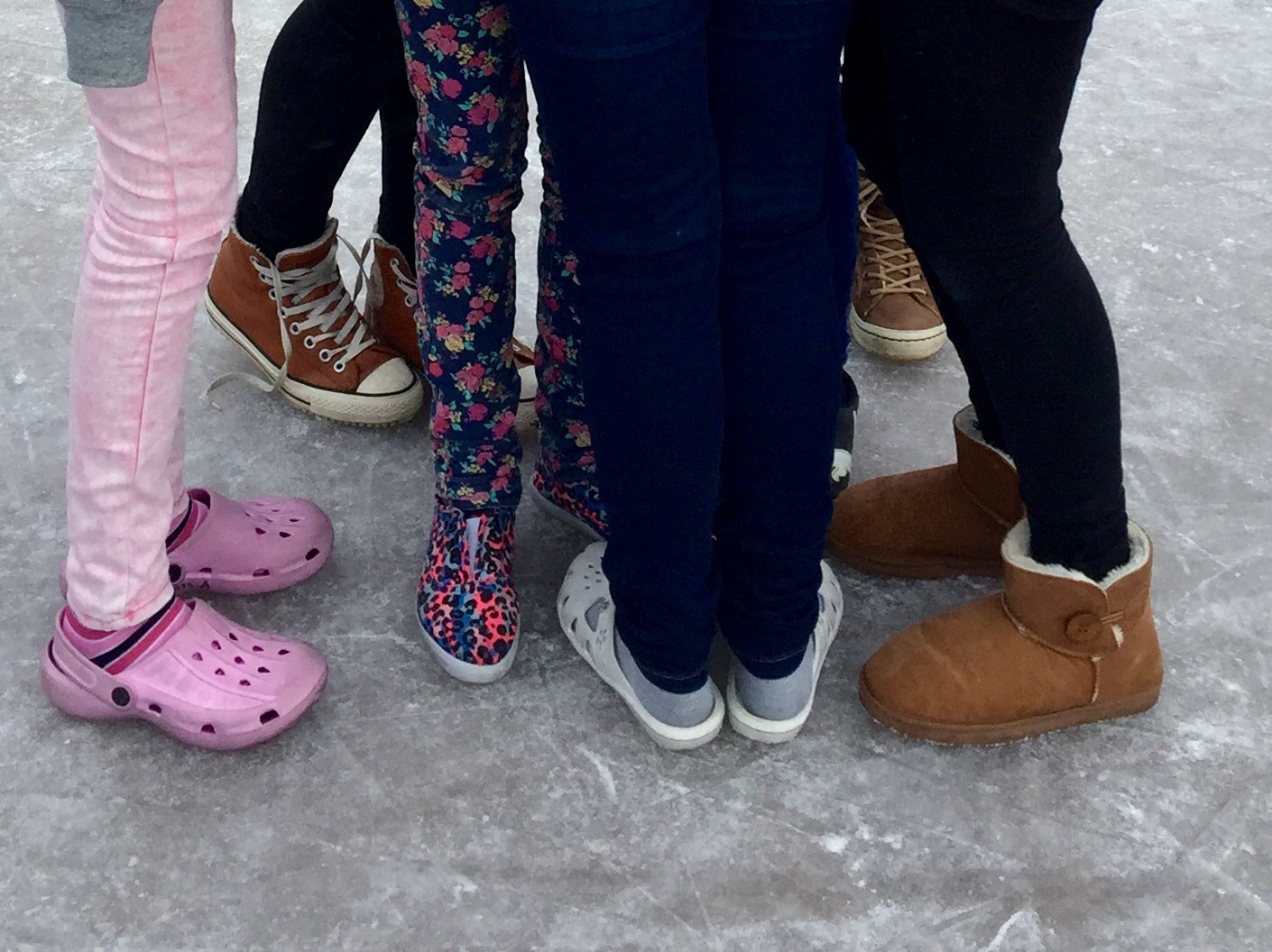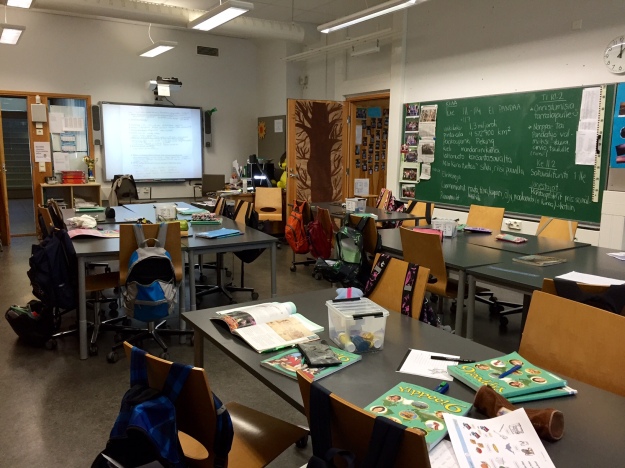I am an American teacher spending four months in Finland on a Fulbright grant, and I recently had the opportunity to spend a week at the Koulumestari School. I observed several different classes, but I spent the most time with one sixth grade class. I have my own blog to keep track of my observations as I visit schools throughout Finland, and I was asked to write a guest post for the Innokas blog.
My first impression of the school was that the atmosphere was less stressful and more relaxed than a typical American school. This was evident when seeing students remove their shoes upon entering the building. Not only are the floors clean enough for sitting, but wearing socks or slippers while learning must make students feel more comfortable and as if they are at home.
A typical day for the 6th graders at Koulumestari starts at 8:15 with some greetings said by the class in unison, both in Finnish and English, followed by a run-down of the day’s schedule. Then they have two 45-minute classes, followed by a 30-minute break during which they go outside to run around and expend extra energy. Students then return for two more 45-minute lessons. Next is a 20-minute lunch and another 30-minute recess outside. The afternoon schedule varies, with classes usually ending at 2:00 (3:00 on Tuesday).
My first day was interrupted by a fire alarm going off, so I got to see what happens when a school full of children in socks have to hurry outside! They scrambled to throw something on their feet, and during the fire drill they huddled on the ice rink behind the school.
The class has 24 students, and they are taught most of their subjects by a regular education teacher (called a class teacher) and a special education teacher. The teachers have the room shown below as well as an adjoining room containing a few tables, a large sofa, and some beanbag chairs for reading. Both rooms are equipped with Smart Boards, desktop computers, and document cameras. Each student has a school-issued tablet that can be taken home.
The two teachers worked together seamlessly, sometimes co-teaching a lesson and other times splitting students into two groups and using the second room. I didn’t even know that one teacher was a special educator until asking, and I wonder if students are aware of the distinction.
Whether students stay together or break into two groups varies based on the lesson. Before an English lesson, the special education teacher gave all the students an option to have class in a smaller group in the next room. He said that a few of the weaker students always go with the smaller group, but that any student who is feeling that he/she needs some extra review can take this option. For a math lesson, a group of the stronger students went to the other room to work on something different from the rest of the class, but the students sometimes have math all together. The second room was also used during free reading time. Some students stayed in the main room and read their library books, while another group went into the other room and curled up on the couch and bean bag chairs to listen to a story read aloud.
Finnish class teachers must be prepared to teach a greater number of subjects than teachers in the US. In addition to the expected subjects of math, Finnish, science, geography, and history, they also must be able to teach music, physical education, art, and handicrafts. Special education teachers are also qualified to teach all of these subjects but have extra training in working with students with learning disabilities. Because the extra subjects are taught by the class teachers rather than by separate teachers of music, art, etc., it is easier to coordinate what students are doing in all of their classes.
One example of integrating the arts into the overall curriculum was evident in an Innokas project students are doing on two endangered animals. One is the giant panda, and the other is the Saimaannorppa (Saimaa ringed seal), a seal that only exists in Lake Saimaa in Finland. You can read more about their project in the blog post below this one.
Students previously did an art project about pandas, and this week they learned how to make seals out of clay. For the art lesson, all of the 6th graders (approximately 45 students) came together in one of the classrooms of the other 6th grade group. They gathered around a table where one of the other 6th grade teachers demonstrated the process they would be following to make seals out of clay. First she orally went over the instructions that were clearly written on the board, with key words underlined. Then she demonstrated the steps students would be following and showed a sample seal that she had made. 
The students then divided themselves between the demonstration room and the adjoining one and got to work making their seals.


Topics students were studying in many of their lessons that week were related to the Chinese component of their project. In religion class, they were reading about Buddhism, while in geography they studied Asia. On Friday, the last day before a one-week school break, all of the 6th graders gathered in the gym to hear a speaker from the World Wildlife Fund talk about seals, pandas, and other endangered animals. After the presentation, all of the students practiced a hilarious seal dance. In March they’ll be hosting a fundraiser for seal conservation efforts.
Thanks to the school for allowing me to see all of the great work that the students are doing!

-Stacy Kissel
Brookline High School, Brookline, MA, USA
Fulbright recipient, University of Helsinki




